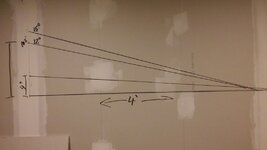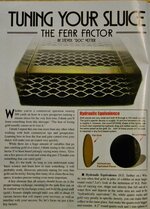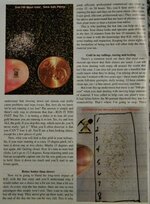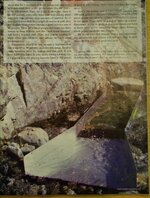geolover
Full Member
- Dec 5, 2015
- 103
- 49
- Detector(s) used
- White's GMZ twin D-Gold Master (shrapnel & casing finder) Garrett pin pointer at
- Primary Interest:
- Prospecting
ANGLE OF SLUICE PER DOC'S ARTICLE IN GOLD PROSPECTING MAG? 12+DEGREE PITCH
I was just reading Steven "Doc" Vetter's article about TUNING YOUR SLUiCE Sept/Oct Gold Prospectors magazine. I don't know who he is but members really seem to respect him, so I read.
He suggests trying out/testing your sluice while starting in the 15 degree to 12-degree range. I'm not saying that he says you should be in that range, just surprised to hear numbers with that much of a pitch. He even refers to the normal or widely excepted 1" for every foot as possibly being too flat, which will clog up your riffles. I'm not quoting, just the gist of the article
Publications Can view with GPAA membership
To put it into perspective: Typical advice for my 4' sluice would only drop 4"
At 13-degrees my 4' sluice would drop almost 11", That sounds crazy, do people run anywhere close to these ratios or degrees?
I had to visualize it so I drew it up (roughly) and I added a picture.

The idea was to find out where you lose your gold, start out at 15* and maybe get down to 12.5* Suggesting that you run as hot as possible.
I was just reading Steven "Doc" Vetter's article about TUNING YOUR SLUiCE Sept/Oct Gold Prospectors magazine. I don't know who he is but members really seem to respect him, so I read.
He suggests trying out/testing your sluice while starting in the 15 degree to 12-degree range. I'm not saying that he says you should be in that range, just surprised to hear numbers with that much of a pitch. He even refers to the normal or widely excepted 1" for every foot as possibly being too flat, which will clog up your riffles. I'm not quoting, just the gist of the article
Publications Can view with GPAA membership
To put it into perspective: Typical advice for my 4' sluice would only drop 4"
At 13-degrees my 4' sluice would drop almost 11", That sounds crazy, do people run anywhere close to these ratios or degrees?
I had to visualize it so I drew it up (roughly) and I added a picture.

The idea was to find out where you lose your gold, start out at 15* and maybe get down to 12.5* Suggesting that you run as hot as possible.








